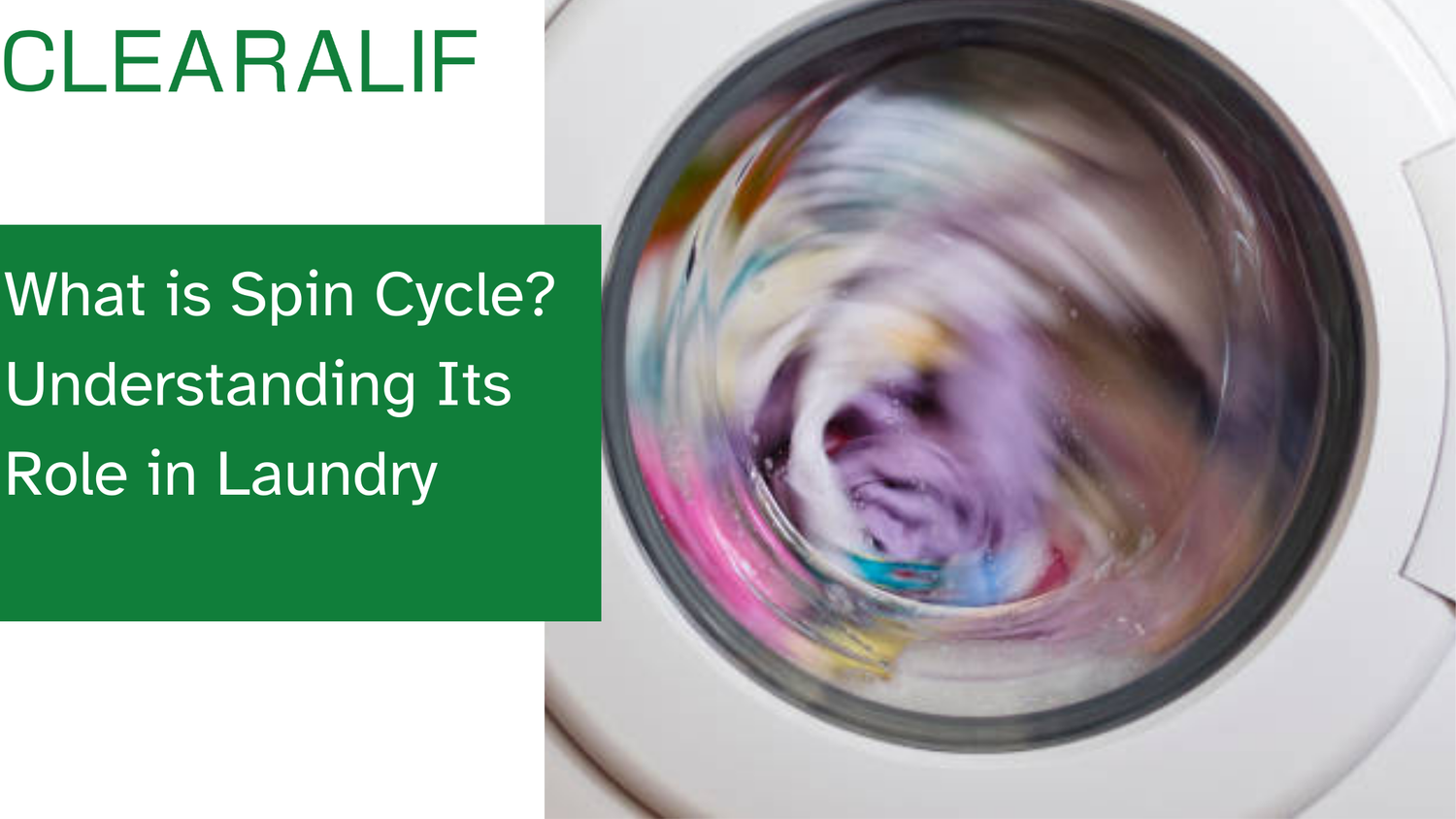Ever wondered why your clothes come out of the washing machine almost dry? Get ready to unravel the mystery of the spin cycle and discover how this crucial laundry step can save you time, energy, and even extend the life of your favorite outfits!
The Basics of Spin Cycle
The spin cycle is the final act in your washing machine’s performance. It’s a high-speed rotation that uses centrifugal force to extract excess water from your clothes. Think of it as your laundry’s very own amusement park ride, minus the screams and plus a whole lot of efficiency.
Key point: The primary purpose of spin cycles is to remove as much water as possible from your clothes before they hit the dryer or clothesline.

What Does the Spin Cycle Do?
-
Water Removal: The spin cycle is like a super-powered salad spinner for your clothes. It whirls them around at high speeds, forcing water out through tiny holes in the drum.
-
Drying Prep: By removing excess water, the spin cycle gives your clothes a head start on the drying process. This means less time in the dryer or on the line.
-
Wrinkle Prevention: A good spin can help reduce wrinkles by preventing clothes from sitting in a soggy heap.
Benefits of Using Spin Cycle
- Time Saver: A thorough spin cycle can cut drying time by up to 50%, getting you back into your favorite jeans faster.
- Energy Efficiency: Less time in the dryer means lower energy bills. Your wallet (and the planet) will thank you!
- Clothing Longevity: Shorter drying times mean less wear and tear on your clothes, helping them last longer.
Different Spin Cycle Settings
Most modern washing machines offer various spin speed options:
- Low Spin(around 600-800 RPM): Gentle on delicates and reduces wrinkles.
- Medium Spin(around 900-1000 RPM): Suitable for everyday loads.
- High Spin(1000+ RPM): Great for heavy fabrics like towels and jeans.
Tip: Use lower speeds for delicate items and higher speeds for sturdy fabrics that can handle the extra force.

Common Spin Cycle Issues and Solutions
-
Unbalanced Loads: If your machine sounds like it’s about to take off, it’s likely unbalanced. Stop the cycle and redistribute the clothes evenly.
-
Excessive Vibration: Make sure your machine is level. Use a spirit level to check and adjust the feet if necessary.
-
Incomplete Spin Cycles: This could be due to overloading. Try reducing the load size and run the cycle again.
Practical advice: If problems persist, consult your machine’s manual or call a professional. It’s better to address issues early than to end up with a broken machine.
Tips for Effective Use of Spin Cycles
-
Sort Smart: Group similar fabrics together for more balanced loads and consistent drying times.
-
Speed Matters: Adjust your spin speed based on fabric type. Delicates need a gentler touch, while towels can handle high speeds.
-
Balance is Key: Distribute clothes evenly around the drum to prevent that dreaded washing machine wobble.
Impact of Spin Cycles on Different Fabrics
- Delicates and Woolens: Use low spin speeds to prevent stretching and damage.
- Heavy Fabrics: Jeans and towels benefit from high spin speeds to remove more water.
- Synthetics: Medium speeds work well, balancing water removal with wrinkle prevention.

Energy Efficiency and Spin Cycles
A higher spin speed might use more energy during the wash, but it significantly reduces drying time, leading to overall energy savings. For maximum efficiency:
- Choose the highest appropriate spin speed for each load.
- Clean your machine’s lint filter regularly to maintain optimal performance.
- Consider air-drying clothes when possible for the ultimate energy-saving laundry routine.
Ready to revolutionize your laundry routine? Start experimenting with different spin settings today and discover the perfect balance of clean, dry clothes and energy efficiency. Your wardrobe (and your utility bill) will thank you!
Frequently Asked Questions (FAQs)
-
Q: Can I skip the spin cycle to save time?
A: While skipping the spin cycle might save a few minutes during washing, it’ll significantly increase drying time. In the long run, using the spin cycle is more time and energy-efficient. -
Q: Why are my clothes still wet after the spin cycle?
A: This could be due to an overloaded machine, a clogged drain, or a malfunctioning spin cycle. Try reducing the load size or running an empty cycle to clean the machine. -
Q: Is a higher spin speed always better?
A: Not necessarily. While higher speeds remove more water, they can also increase wrinkles and wear on delicate fabrics. Choose the appropriate speed for each fabric type. -
Q: How long should a spin cycle last?
A: Typically, a spin cycle lasts between 5-10 minutes, depending on your machine and the selected settings. -
Q: Can spin cycles damage my clothes?
A: If used correctly, spin cycles shouldn’t damage your clothes. However, using too high a speed for delicate fabrics or leaving zippers open can cause wear and tear.







Leave a comment
This site is protected by hCaptcha and the hCaptcha Privacy Policy and Terms of Service apply.